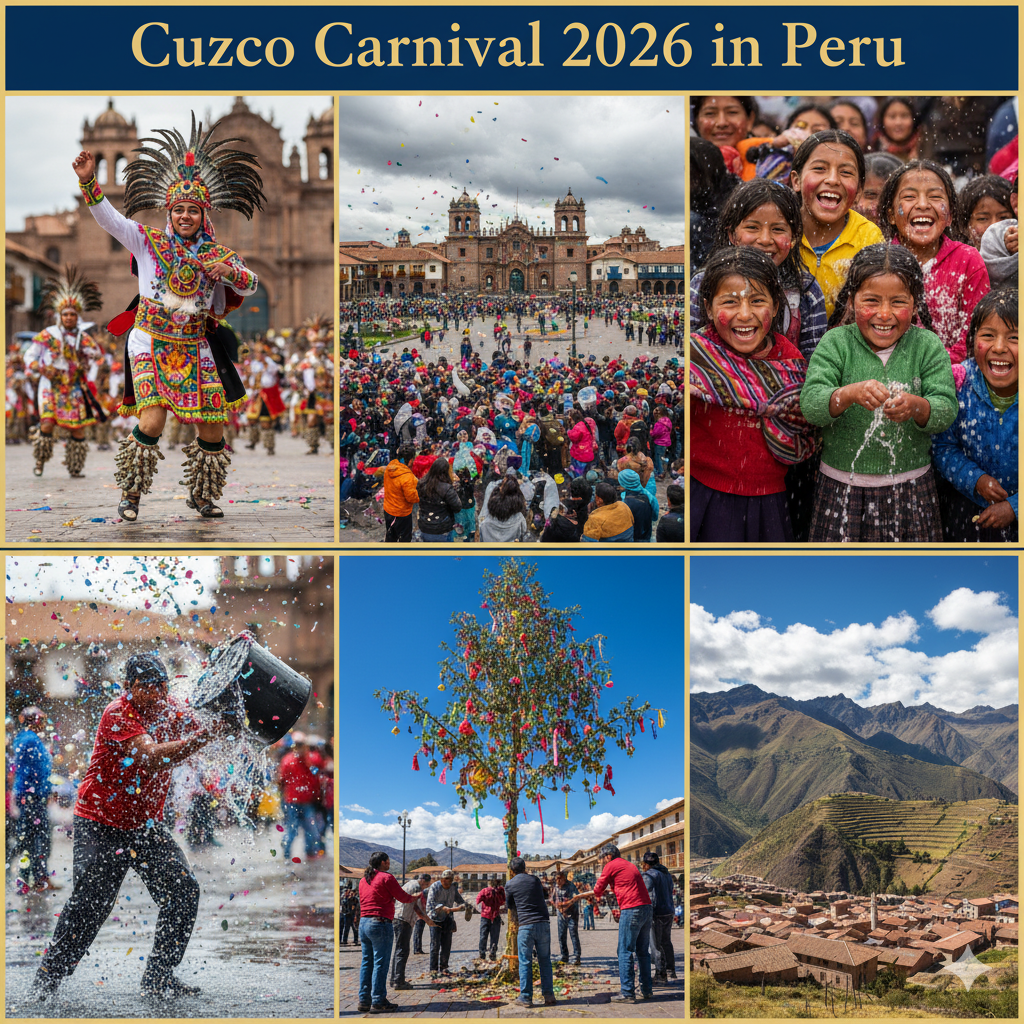Where Ancient Tradition Meets Modern Celebration
Each February, the ancient Incan capital of Cuzco transforms into a living rainbow of music, dance, laughter, and devotion. The Cuzco Carnival 2026—known locally as Carnaval de Cusco—is one of Peru’s most spectacular festivals, uniting the country’s deep-rooted Andean culture with vibrant colonial-era traditions.
The cobbled streets of Cuzco become alive with celebration as locals and visitors take part in colorful parades, water battles, and folkloric dances that pay tribute to both Catholic and Indigenous heritages. The festival is not just an event—it’s a joyful expression of identity, gratitude, and community spirit.
Cuzco, nestled in the Andean mountains at over 3,400 meters above sea level, is already one of the most magical cities in South America. But during the Carnival, its ancient plazas and colonial architecture become the stage for a cultural explosion unlike anywhere else on Earth.
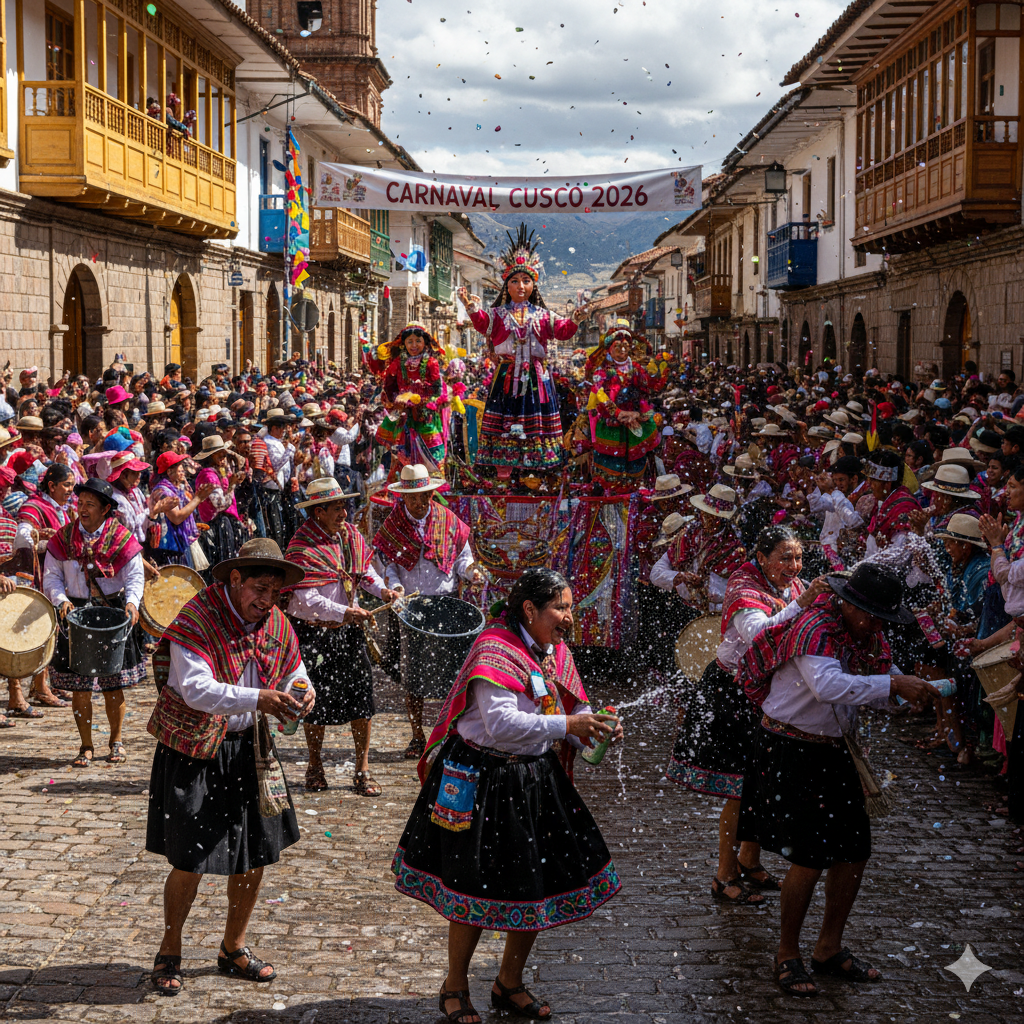
If Machu Picchu tells the story of Peru’s past, then Cuzco Carnival tells the story of its living present—a radiant blend of Inca soul, Spanish color, and human joy.
The History and Meaning of Cuzco Carnival
The origins of Cuzco Carnival date back centuries, tracing both to pre-Columbian rituals and Spanish colonial celebrations. Before the arrival of the Spaniards, the Indigenous people of the Andes celebrated festivals in honor of Pachamama (Mother Earth), Inti (the Sun), and the changing of the agricultural seasons. These events were marked by offerings, music, and dance to express gratitude for the fertility of the land.
When the Spanish colonized Peru, they introduced Catholic Lent festivities, which preceded the fasting period. The Indigenous communities merged these Catholic traditions with their own, giving birth to a fusion festival that celebrated both faiths—a vibrant Andean-Catholic hybrid that remains alive today.
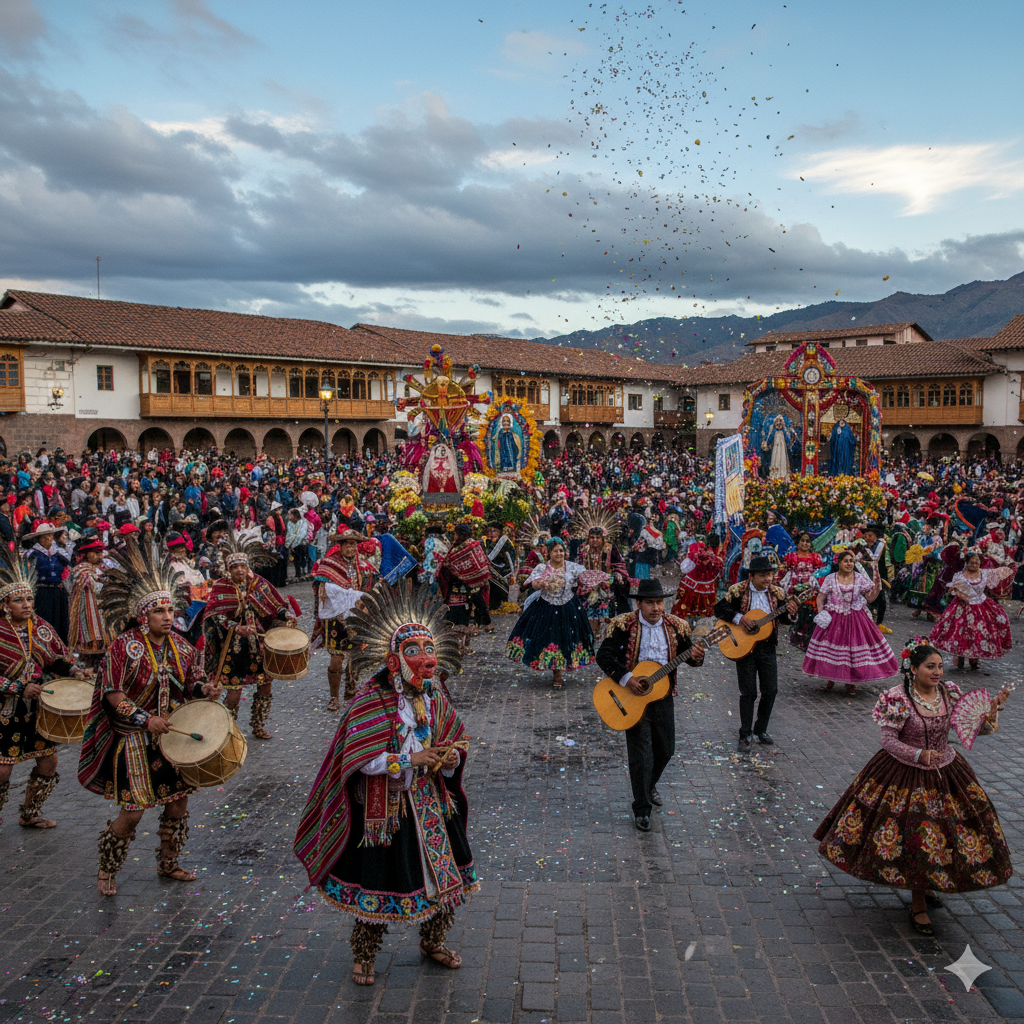
The symbolism of Carnival is rich:
- Water fights represent cleansing and purification before Lent.
- Flour, paint, and flowers signify fertility, joy, and new beginnings.
- Traditional food and drink—especially chicha de jora (fermented corn beer)—symbolize community and abundance.
One of the most beloved traditions is “Compadres y Comadres” Day, where men and women exchange small gifts, often dolls or tokens, to celebrate friendship and solidarity. These pre-Carnival gatherings build anticipation and strengthen social ties before the main festivities.
Cuzco Carnival thus isn’t just a party—it’s a living ritual connecting ancient roots with modern joy.
Cuzco Carnival 2026 Dates and Schedule
The Cuzco Carnival 2026 is expected to take place from February 14 to 18, 2026, coinciding with the pre-Lenten period celebrated across much of Latin America.
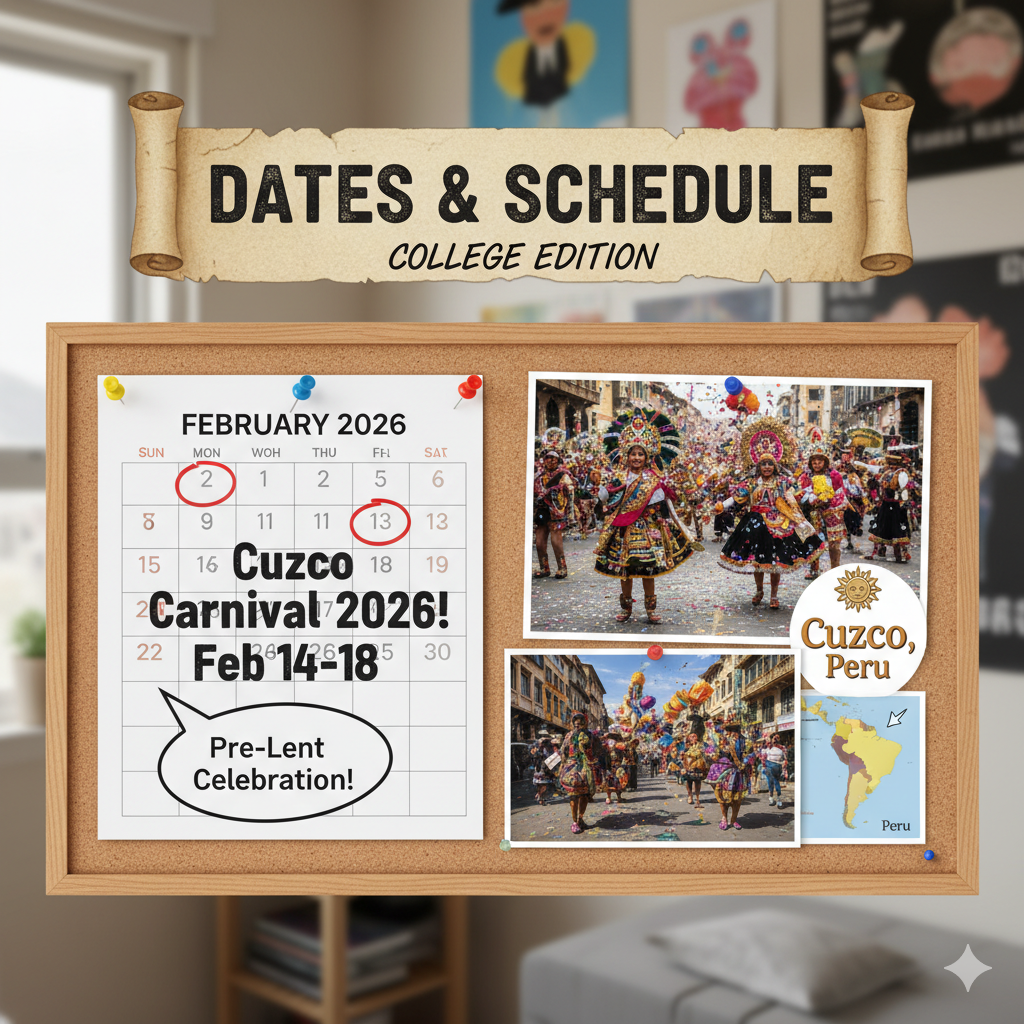
While the exact schedule varies each year, here’s what travelers can expect in 2026:
- Saturday: The grand opening with street musicians, local markets, and the first round of joyful water and paint battles.
- Sunday: Traditional dance parades featuring dozens of Andean troupes in dazzling costumes.
- Monday: Compadres and Comadres festivities take over the neighborhoods, emphasizing friendship and community spirit.
- Tuesday: The Yunza Tree Ceremony—one of the most anticipated rituals of the Carnival.
- Wednesday: Closing events, fireworks, and music performances across the city’s main plazas.
Each day brings something unique, from street games and food fairs to religious processions and night dances under the stars.
Major Events and Highlights of Cuzco Carnival 2026
The Legendary Water and Paint Fights
One of the festival’s most famous attractions is its water and paint battles. Locals, especially the youth, splash one another with water balloons, buckets, and even colored powder. The air fills with laughter and energy as everyone—visitors included—joins in the spontaneous chaos. These playful interactions are said to purify the soul and prepare the spirit for the fasting period ahead.
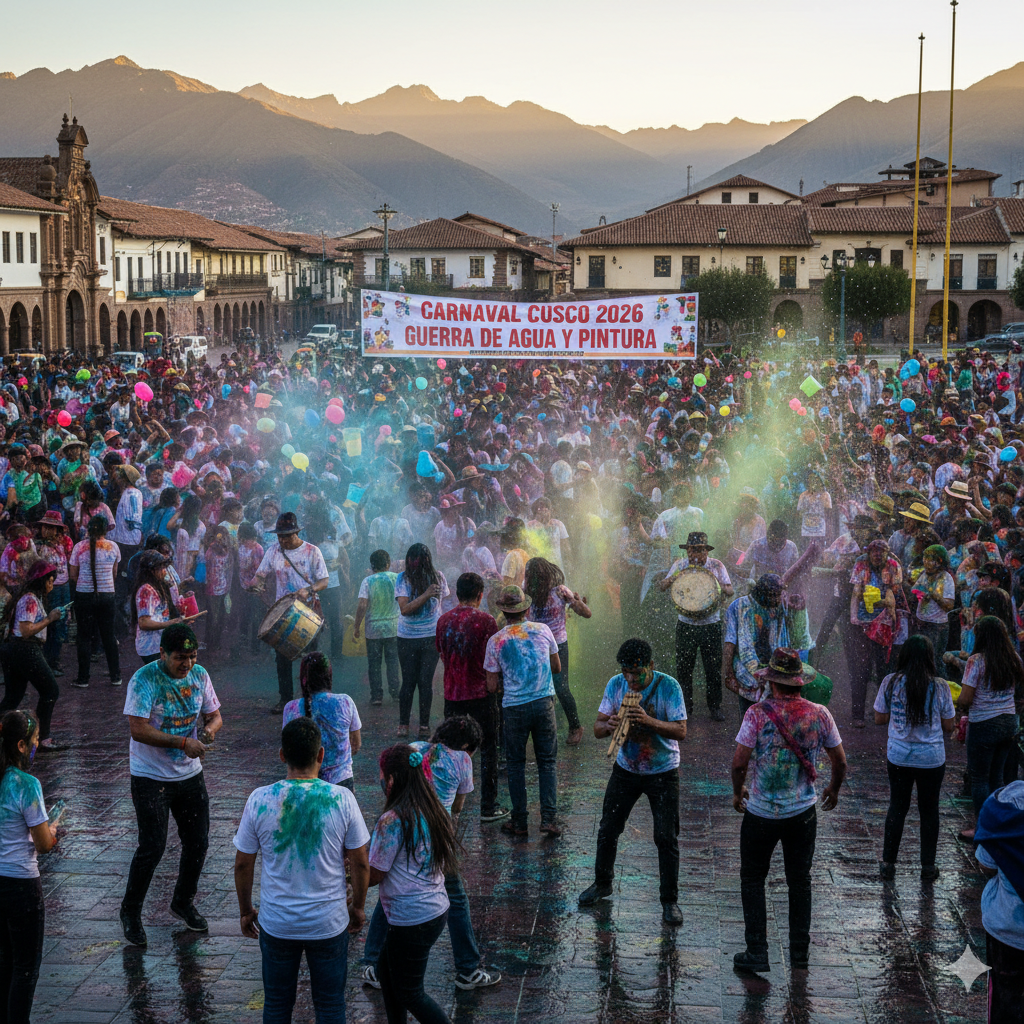
Traditional Dances and Parades
Cuzco’s parades are mesmerizing cultural showcases. Over 30 dance troupes perform traditional Andean routines in the streets, representing different provinces and Indigenous nations. Dances such as the Qhapac Qolla, Huaylash, and Qhapac Negro tell ancestral stories through movement and music. Each step honors the mountains, the sun, and the spirits that sustain life.
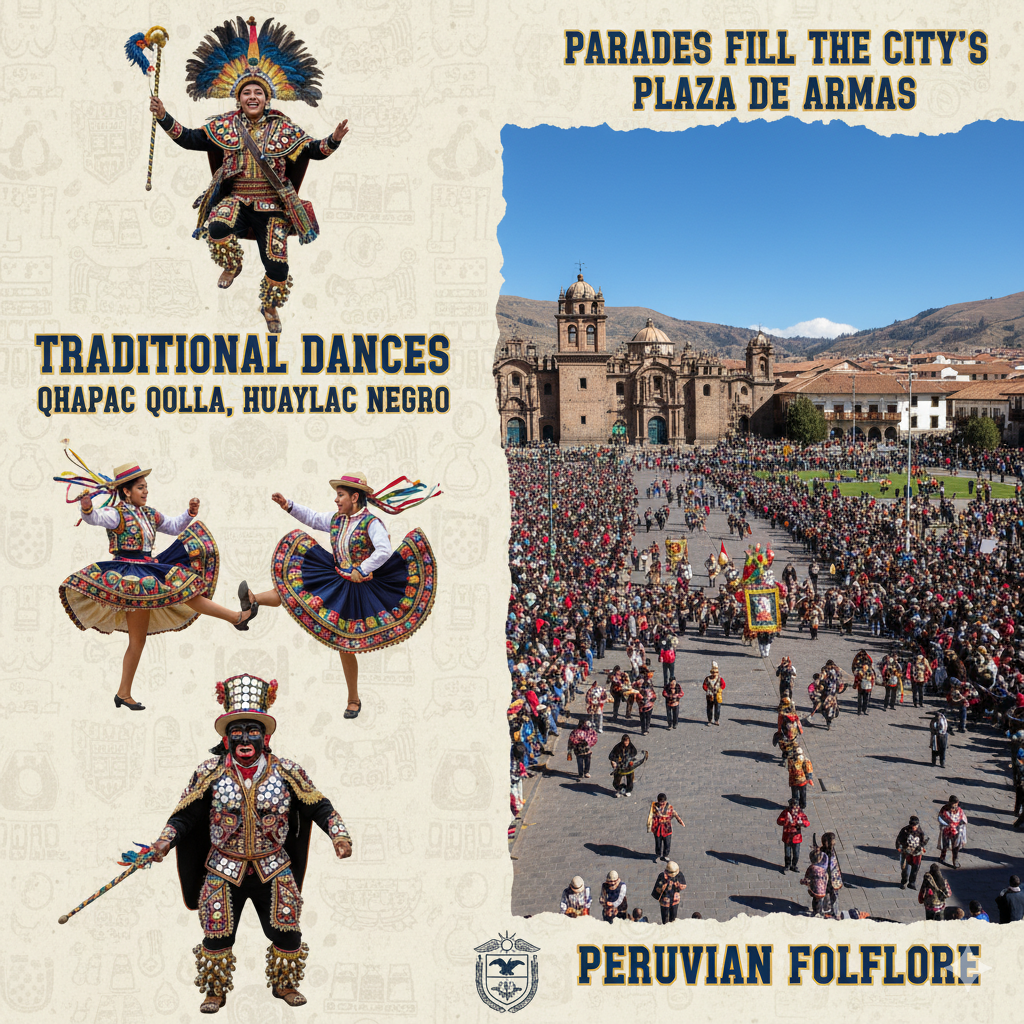
The parades fill the city’s Plaza de Armas, where performers in bright costumes and feathered hats swirl to the rhythm of charangos and pan flutes. The infectious energy draws both locals and tourists into the heart of the celebration.
The Yunza Tree Celebration
At the heart of Carnival lies the Yunza, or Umisha, ceremony. A tall tree is decorated with balloons, gifts, fruits, and ribbons, then “planted” in the center of a dance circle. Participants take turns striking it with a machete while dancing around it to rhythmic music. When the tree finally falls, the crowd rushes to collect the gifts—symbolizing abundance and renewal. The couple who delivers the final cut is chosen to host the next year’s Yunza.
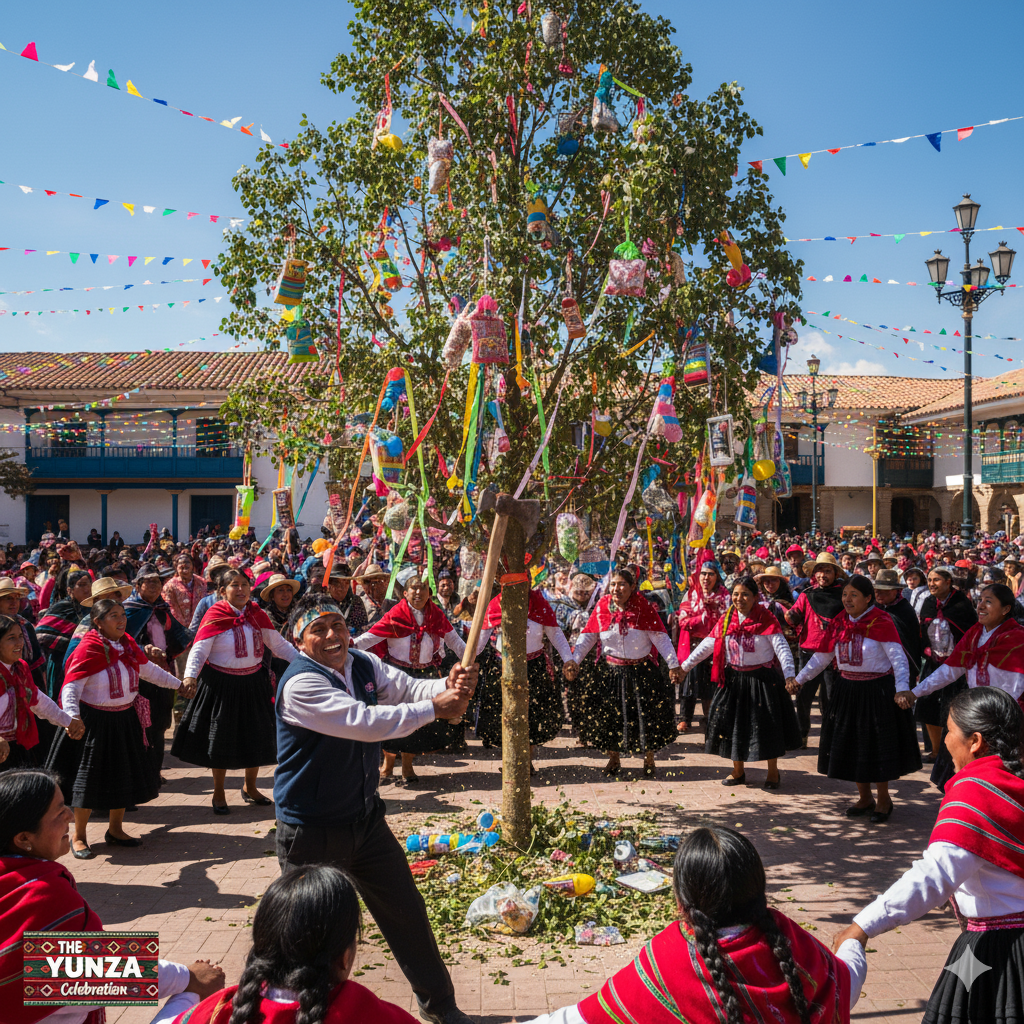
Music and Street Performances
From sunrise to well past midnight, music fills the air. Local bands play huaynos, sikuris, and marinera rhythms using traditional instruments. Street performers and folk bands roam through alleyways, creating spontaneous concerts that bring every corner of Cuzco to life.
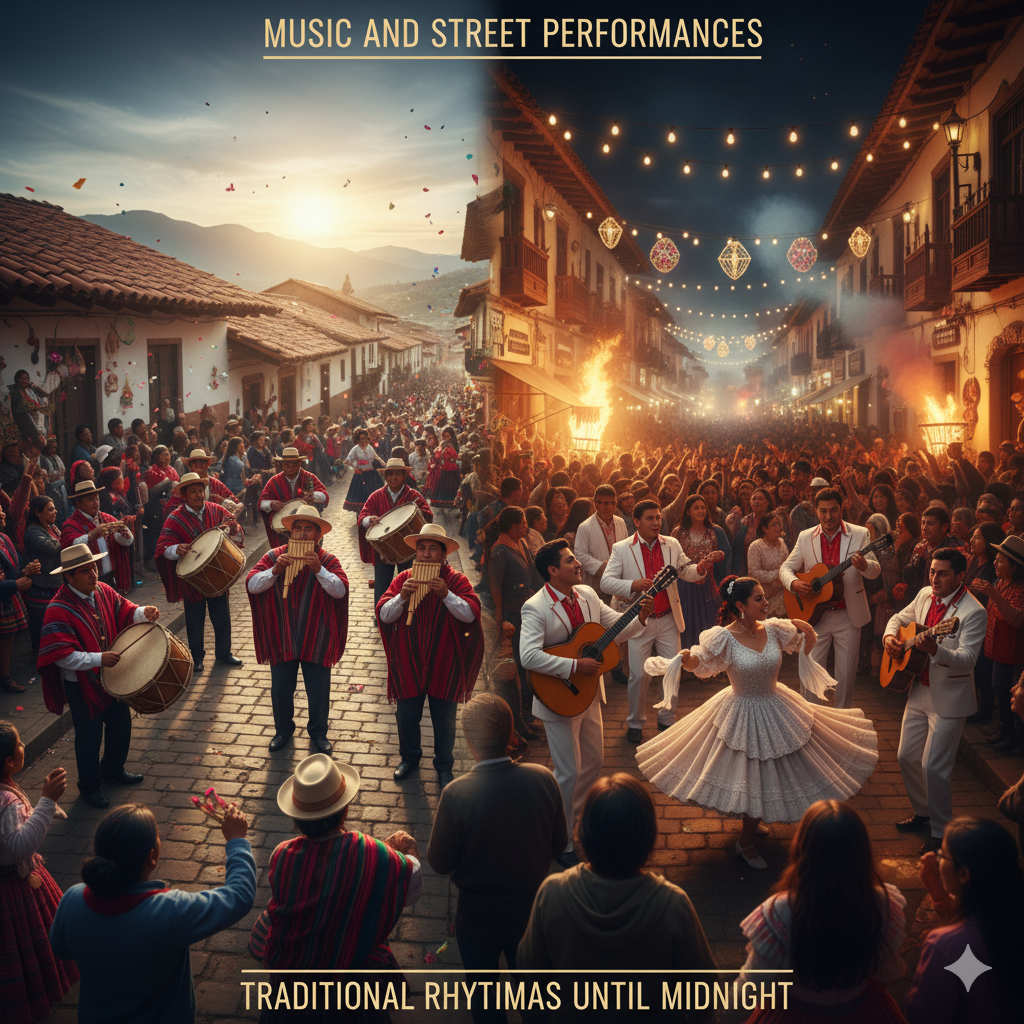
Food Stalls and Andean Cuisine
Cuzco Carnival is also a culinary feast. Streets are lined with vendors offering Andean specialties like:
- Chiriuchu – a traditional cold dish featuring roasted guinea pig, sausage, corn, cheese, and dried fish.
- Tamales, anticuchos (grilled meat skewers), and empanadas.
- Sweet treats like picarones (Peruvian doughnuts made from squash and sweet potato).
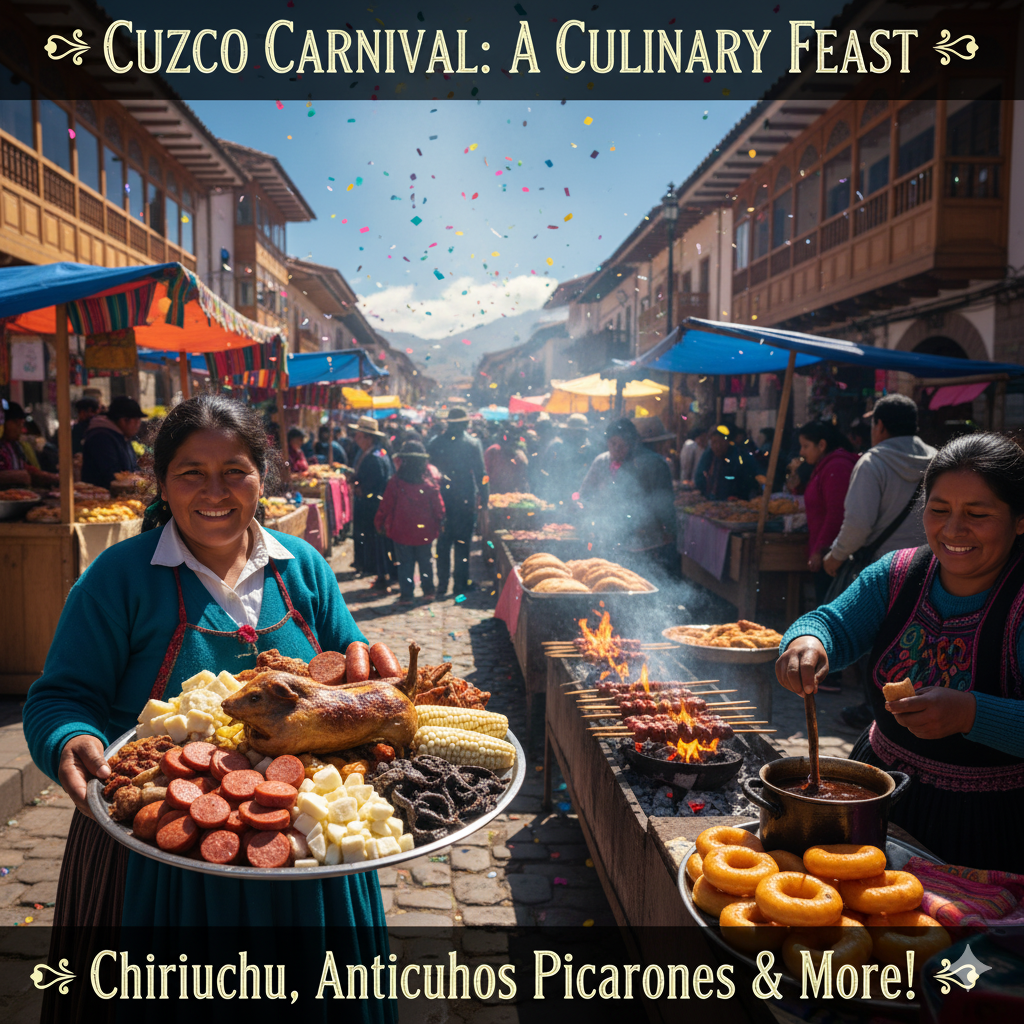
Wash it all down with chicha morada (purple corn drink) or pisco sour. The mix of smells—roasted meats, corn, and herbs—adds another sensory layer to the festival experience.
Cuzco Carnival 2026 Traditions You Can’t Miss
Beyond the major parades, there are smaller, deeply meaningful traditions woven into the festival’s fabric.
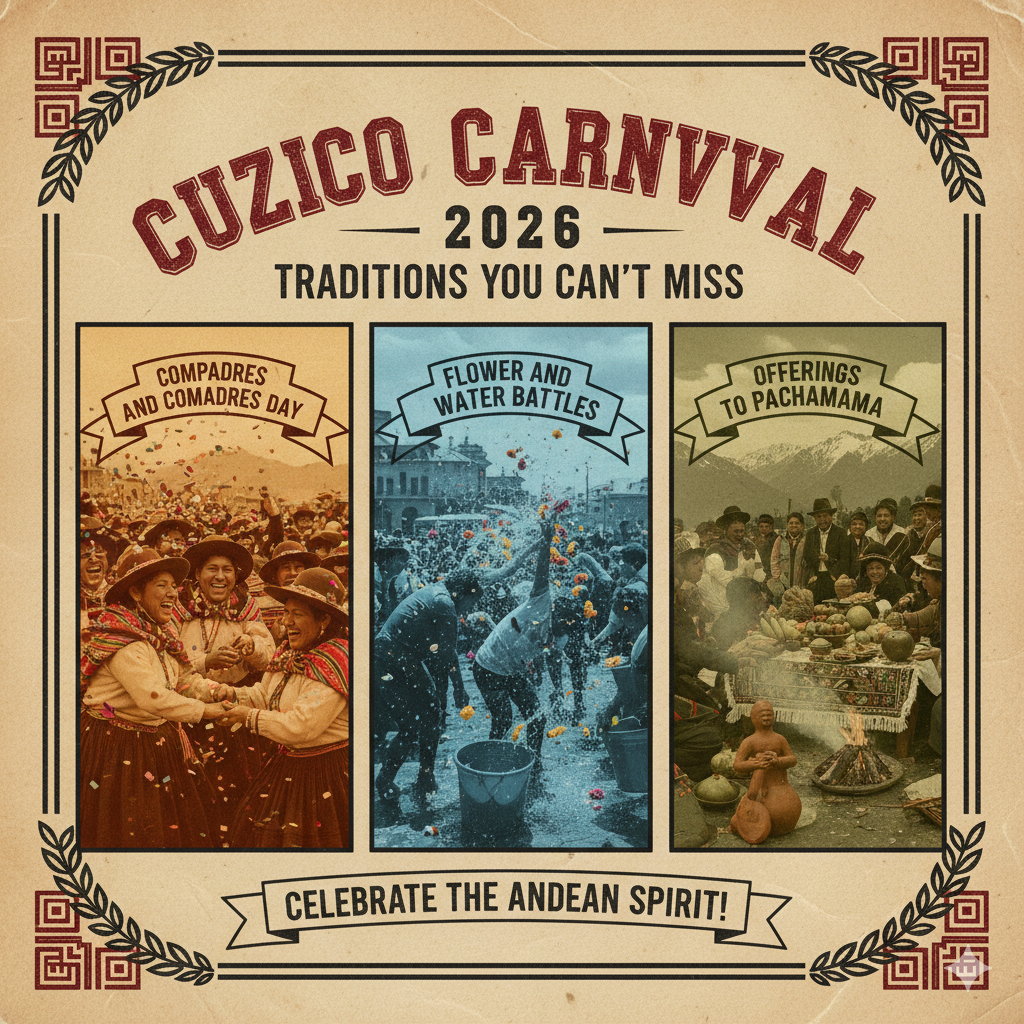
Compadres and Comadres Day
Celebrated before the main Carnival, these days honor friendship and social unity. Men (Compadres) celebrate one week, and women (Comadres) the next. They exchange symbolic gifts, often humorous dolls or handmade crafts, representing affection and camaraderie.
Flower and Water Battles
Throughout the week, locals throw flowers, confetti, and colored water at friends and strangers alike. It’s a joyful act symbolizing renewal, life, and equality—during Carnival, everyone is part of the same celebration.
Offerings to Pachamama
Many families perform small rituals of gratitude to Pachamama, the Earth Mother. Offerings of coca leaves, wine, and chicha are buried or burned to bless the coming year. These rituals reveal how Carnival remains a spiritual celebration as much as a social one.
Where to Stay in Cuzco During the Carnival
Because Carnival falls in Peru’s summer and peak travel season, accommodations fill up fast. Here are the best options by category:
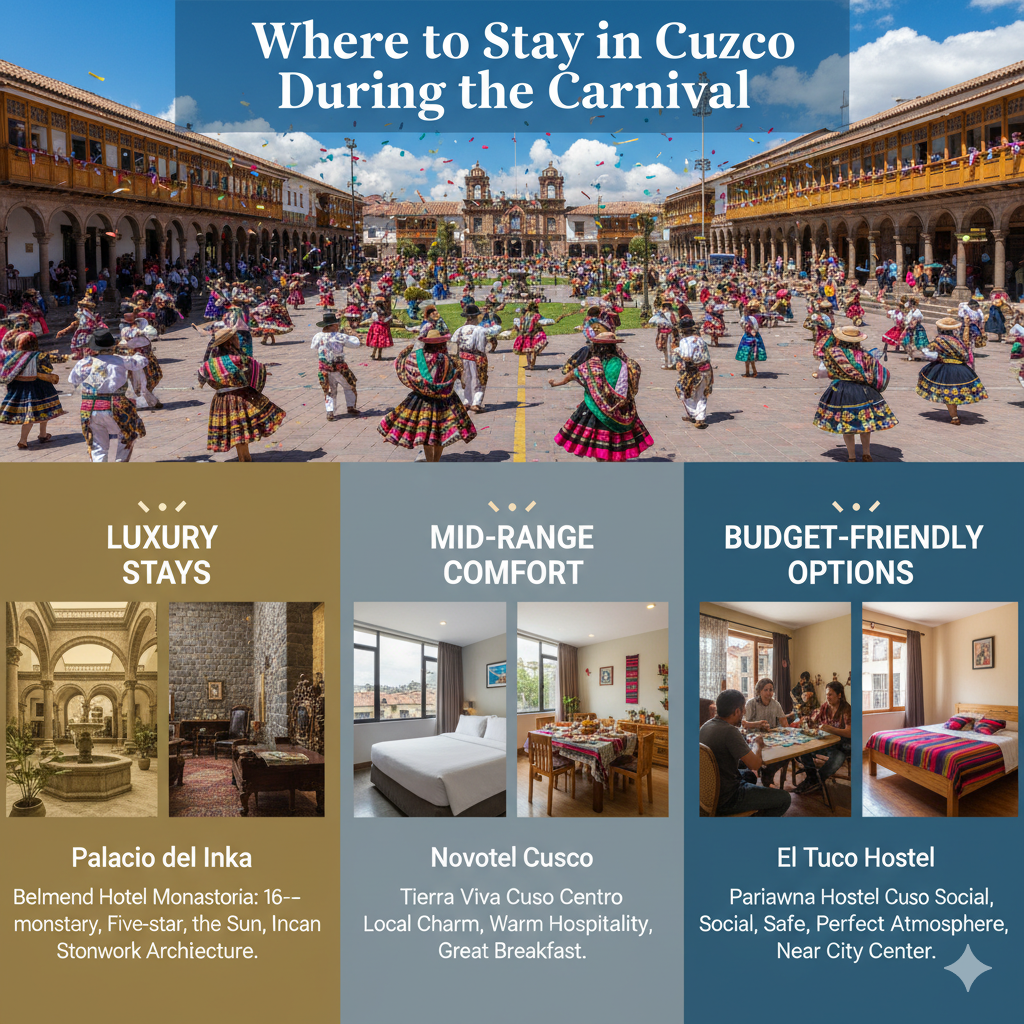
Luxury Stays
- Belmond Hotel Monasterio – A 16th-century monastery turned five-star hotel, offering colonial architecture and gourmet dining.
- Palacio del Inka – Steps from the Temple of the Sun, this historic hotel blends Incan stonework with modern elegance.
Mid-Range Comfort
- Novotel Cusco – Perfect for those wanting central access and modern amenities.
- Tierra Viva Cusco Centro – Local charm with warm hospitality and great breakfast.
Budget-Friendly Options
- Pariwana Hostel Cusco – Social, safe, and perfect for young travelers.
- El Tuco Hostel – Family-run with a cozy atmosphere near the city center.
Pro tip: Book at least three months in advance and stay near Plaza de Armas for easy access to all major festivities.
How to Get to Cuzco Carnival 2026
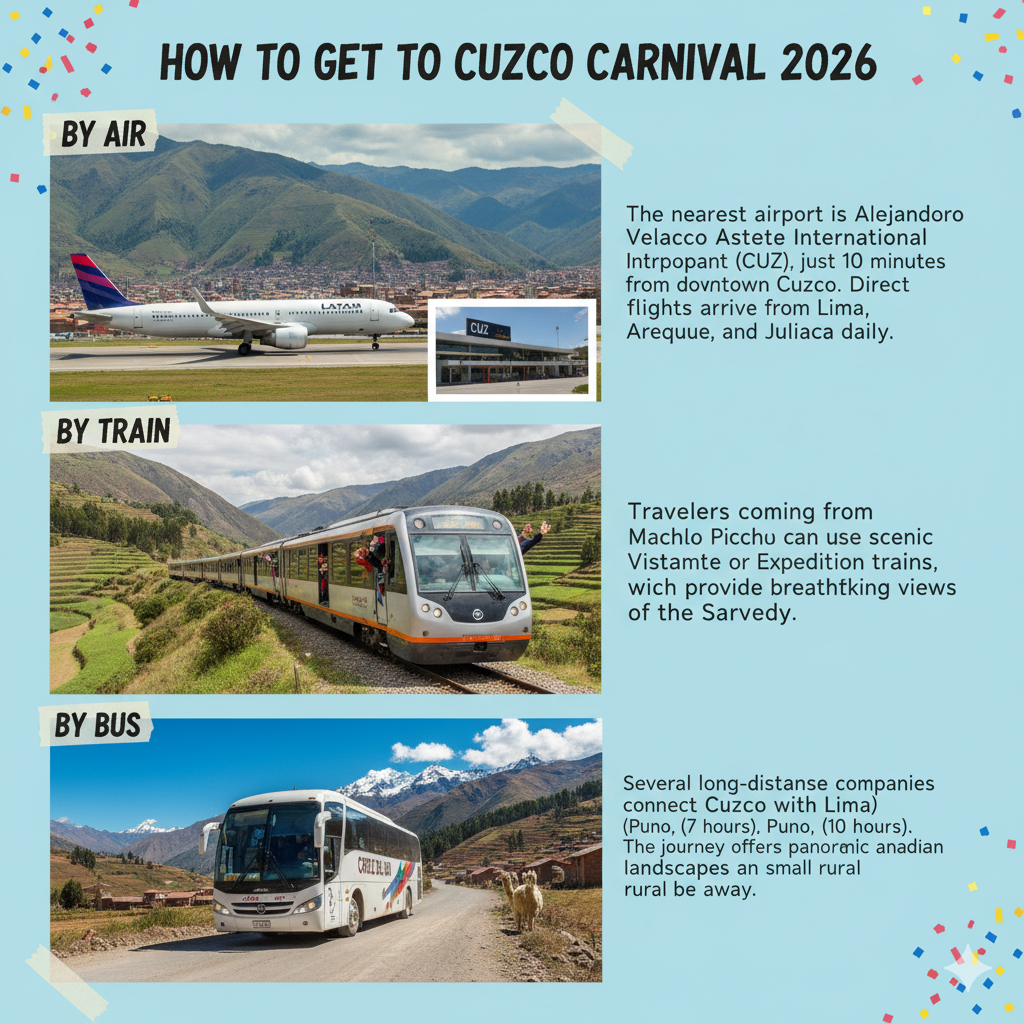
By Air
The nearest airport is Alejandro Velasco Astete International Airport (CUZ), just 10 minutes from downtown Cuzco. Direct flights arrive from Lima, Arequipa, and Juliaca daily.
By Train
Travelers coming from Machu Picchu can use the scenic Vistadome or Expedition trains, which provide breathtaking views of the Sacred Valley.
By Bus
Several long-distance companies connect Cuzco with Lima (20 hours), Puno (7 hours), and Arequipa (10 hours). The journey offers panoramic Andean landscapes and small rural villages along the way.
Source:
Things to Do in and Around Cuzco Beyond the Carnival
After the excitement of the Carnival, extend your stay to explore Cuzco’s timeless treasures.
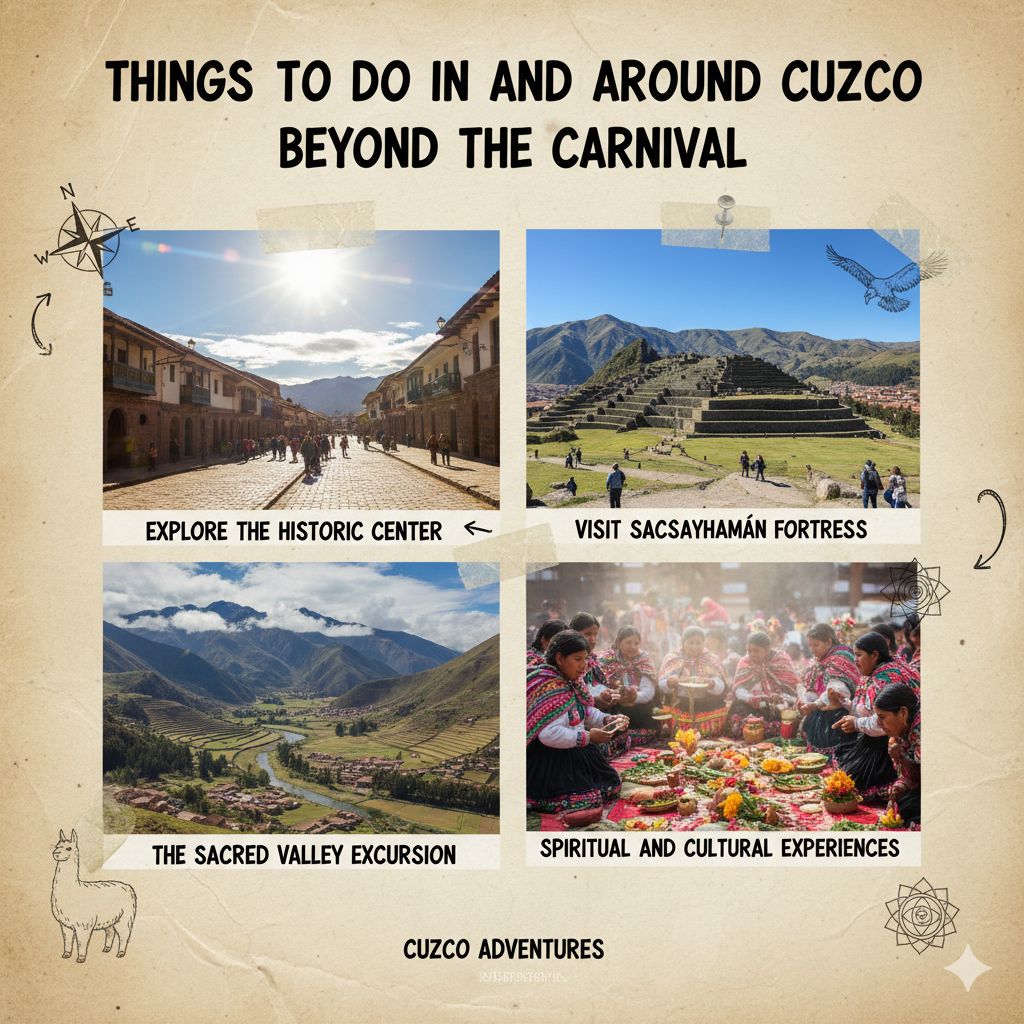
Explore the Historic Center
Wander through Plaza de Armas, framed by colonial cathedrals and Incan foundations. Visit the Cathedral of Cuzco, a UNESCO World Heritage gem filled with art and religious relics.
Visit Sacsayhuamán Fortress
Just above Cuzco lies Sacsayhuamán, an ancient Inca ceremonial complex. Its massive stone walls and panoramic views of the city make it a must-visit.
The Sacred Valley Excursion
Take a day trip to Pisac, Ollantaytambo, or Chinchero—villages that preserve ancient Incan traditions. Explore colorful markets, terraces, and ruins surrounded by breathtaking Andean scenery.
Spiritual and Cultural Experiences
Try a coca leaf reading or participate in a Pachamama blessing ceremony with local shamans. These experiences connect travelers with Andean spirituality in authentic ways.
Sustainability and Local Impact
Cuzco Carnival is not just a celebration—it’s a symbol of cultural sustainability. The city has embraced eco-friendly tourism initiatives to protect its fragile environment and heritage.
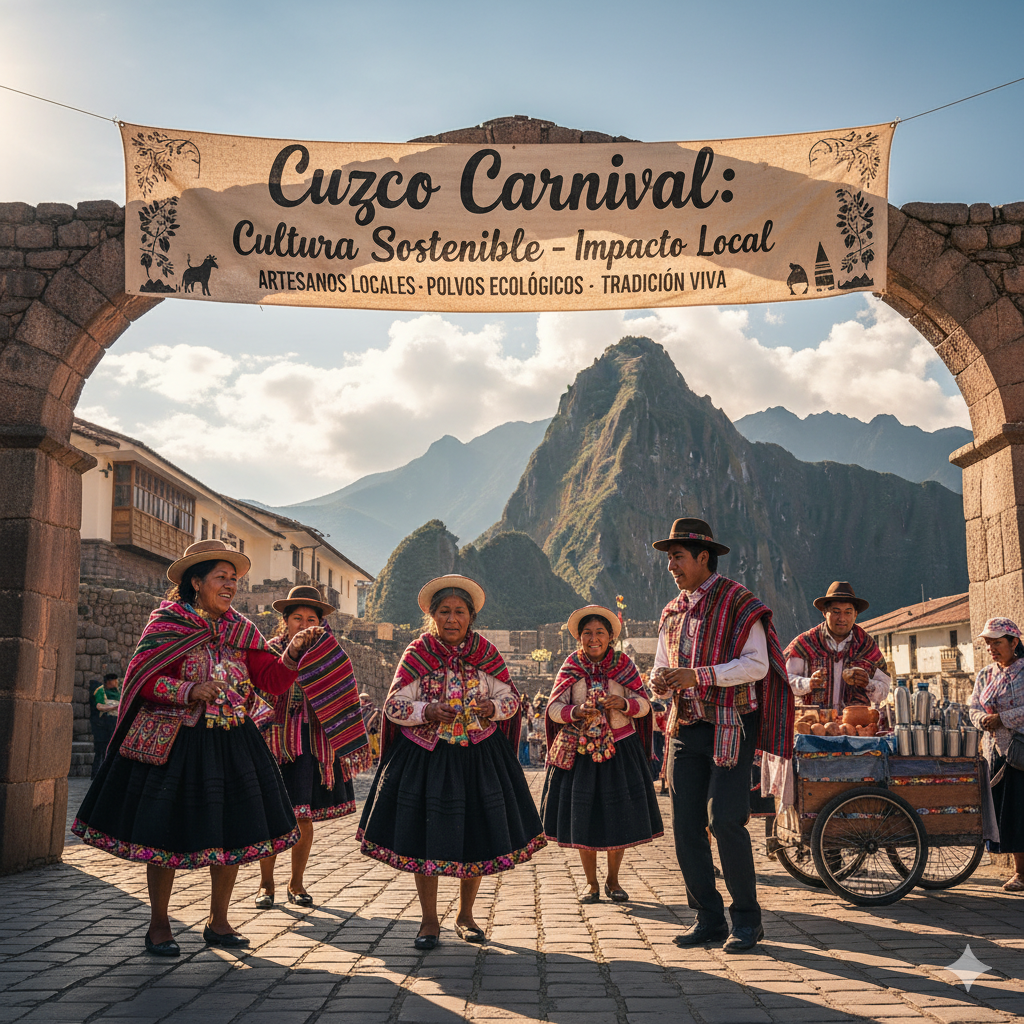
- Local artisans benefit directly from festival sales.
- Visitors are encouraged to use biodegradable powders and avoid plastic water balloons.
- Traditional outfits are handmade by local families, supporting small economies.
By traveling responsibly, visitors help preserve Cuzco’s delicate balance between culture, tourism, and the environment.
Travel Tips for Attending Cuzco Carnival 2026
- Dress for mess: Wear clothes you don’t mind getting wet or painted.
- Acclimate to altitude: Spend two days adjusting before joining energetic parades.
- Stay hydrated and protected: Sunscreen and water bottles are essential at high altitudes.
- Secure your gear: Use waterproof pouches for phones and cameras.
- Bring cash: Many vendors don’t accept cards.
- Learn some Quechua or Spanish phrases: A friendly “¡Allin p’unchay!” (Good day) goes a long way.
- Respect local customs: Avoid splashing elders or participants in religious processions.
Photography and Social Media Tips For Cuzco Carnival 2026
Cuzco Carnival is a photographer’s paradise. For the best shots:
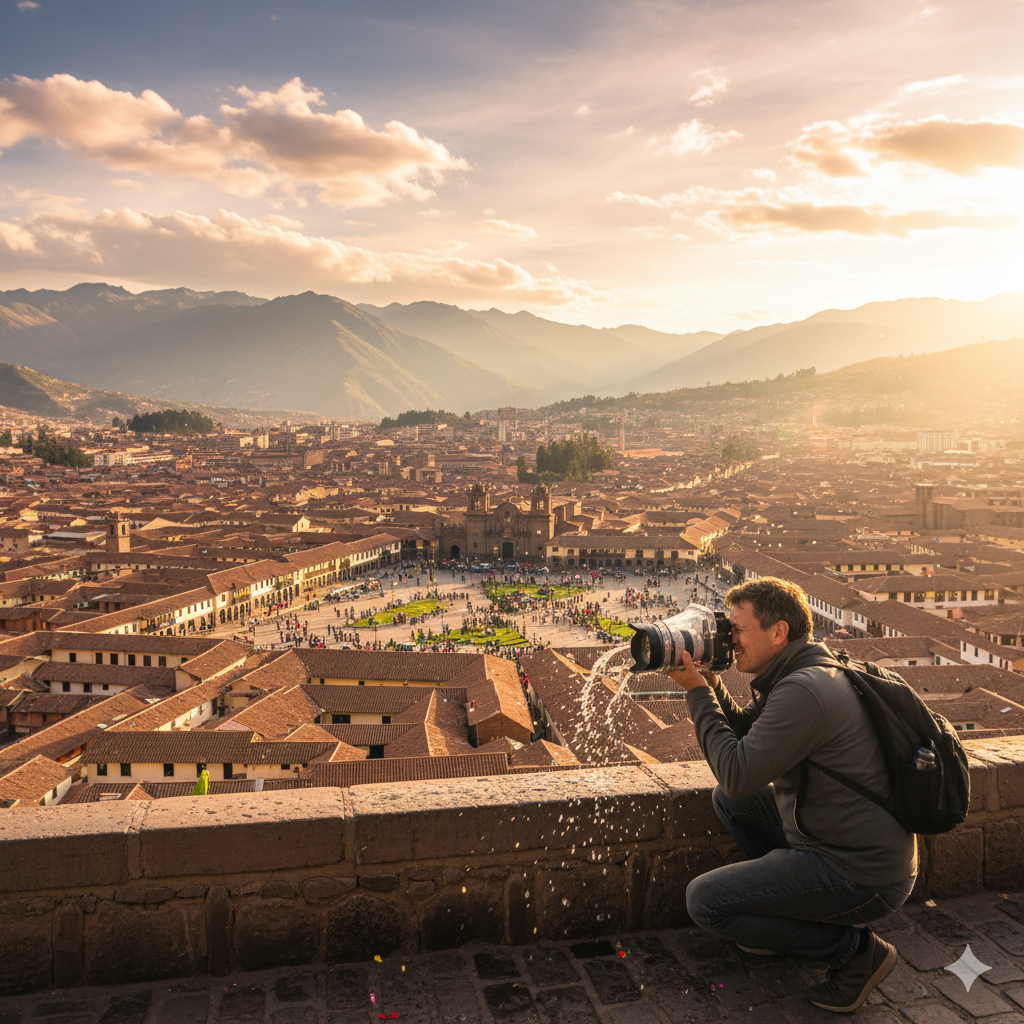
- Capture morning parades when light is soft and colors glow.
- Use a wide-angle lens for dance scenes in Plaza de Armas.
- Protect your camera with waterproof gear during water fights.
- Sunset shots from San Blas neighborhood capture golden views over the city.
Use hashtags like:#CuzcoCarnival2026 #PeruFestivals #AndeanCulture #CarnavalDeCusco #TravelPeru
Check Also: Up Helly Aa 2026 in Lerwick, Scotland
Eventers – Feel the Pulse of Peru’s Living Heritage
The Cuzco Carnival 2026 is more than an event—it’s an emotional symphony of joy, spirituality, and unity. It’s where ancient Andean beliefs meet modern festivity, creating a celebration that transcends time and culture.
Here, every splash of color, every beat of a drum, and every smile tells the story of a people who have turned survival into art and celebration into heritage.
Travelers who attend this festival don’t just witness Peru—they feel it.
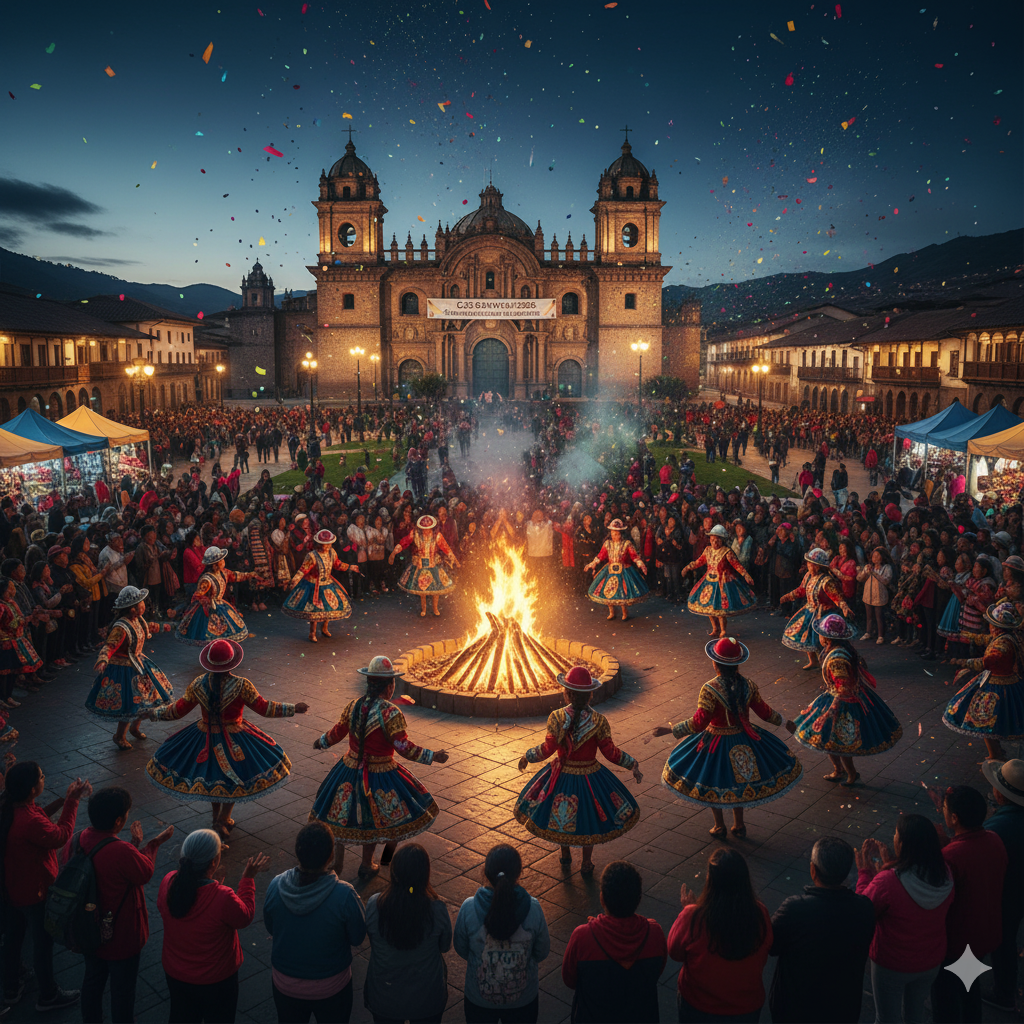
So pack your spirit of adventure, dance to the rhythm of the Andes, and let Cuzco’s Carnival in 2026 remind you that joy is the world’s oldest language.
FAQs – Cuzco Carnival 2026
Q1. When is Cuzco Carnival 2026 celebrated?
It’s expected from February 14 to 18, 2026, coinciding with the pre-Lenten period.
Q2. What is the Yunza Tree Ceremony?
A decorated tree is danced around and cut down, symbolizing abundance and renewal.
Q3. Is Cuzco Carnival family-friendly?
Yes, with parades, games, and cultural shows suitable for all ages.
Q4. Do I need tickets to attend?
Most activities are free; only special galas or tours may require tickets.
Q5. What should I pack?
Warm yet light clothes, waterproof gear, sunscreen, and your sense of fun.

